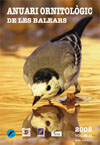|
Abstract:
|
[spa] Darwin y las islas. En su viaje de circunnavegación a bordo del Beagle, Charles Darwin visita numerosas islas. Las extraordinarias observaciones llevadas a cabo en las mismas sientan las bases de su pensamiento evolutivo e influyen decisivamente en la formulación posterior de sus teorías. Las islas son también objeto de brillantes observaciones geológicas que desembocan en la propuesta de una hipótesis general, vigente hoy día, sobre la formación de los atolones coralinos. Asimismo, Darwin elabora hipótesis biogeográficas sobre el proceso de colonización insular a partir de las evidencias acumuladas en su largo viaje. A pesar de su brevedad, probablemente la visita a las islas Galápagos es la etapa más importante del viaje de Darwin. Los especímenes y datos obtenidos de tortugas terrestres y pinzones sirven años más tarde de sólida base para la explicación de la radiación adaptativa de un grupo de especies a partir de un antecesor común. Menos conocida es quizás la esencial influencia de las observaciones sobre los sinsontes de Galápagos (familia Mimidae), a partir de las cuales Darwin esboza, ya durante el viaje de regreso, las primeras reflexiones evolucionistas en sus famosas notas ornitológicas. Las islas han jugado pues un papel esencial en la génesis de la teoría de la evolución por selección natural y, de hecho, constituyen hoy el mejor laboratorio natural para el estudio de los procesos selectivos. El caso paradigmático es el de la extraordinaria investigación llevada a cabo durante varias décadas en Galápagos por Peter y Rosemary Grant sobre los pinzones de Darwin. ; [eng] Darwin and the islands. In his journey of circumnavigation aboard H.M.S. Beagle, Charles Darwin visited several islands. His extraordinary observations lay the foundations of evolutionary thought and influenced the subsequent development of his theories. The islands are also perceptively studied from a geological viewpoint, leading to the proposal of a general hypothesis, still extant, on the formation of coralline atolls. Likewise, Darwin developed some biogeographical hypotheses on the process of colonization of the islands from the evidence accumulated during his long journey. Perhaps the visit to the Galapagos Islands is, despite its brevity, the most important step of the trip. Specimens and data collected from tortoises and finches served years later as a solid basis for the explanation of adaptive radiation of a group of species from a common ancestor. Probably less well known is the crucial influence of observations on Galapagos’ mockingbirds (family Mimidae), from which Darwin outlined, within his famous ornithological notes and during the return journey, the first thoughts of his evolutionary theory. Since Darwin’s times, islands have played a key role in the genesis of the theory of evolution by natural selection. In fact, islands are today the best natural laboratory for the study of selective processes. The paradigmatic case is the remarkable research conducted in the Galapagos over several decades on Darwin’s finches by Peter and Rosemary Grant. ; [cat] Darwin i les illes. En el seu viatge de circumnavegació a bord del Beagle, Charles Darwin visita nombroses illes. Les extraordinàries observacions que hi duu a terme estableixen les bases del seu pensament evolutiu i influeixen decisivament en la formulació posterior de les seves teories. Les illes són també objecte de brillants observacions geològiques que desemboquen en la proposta d’una hipòtesi general, vigent encara avui, sobre la formació dels atol·lons coral·lins. Així mateix, Darwin elabora hipòtesis biogeogràfiques sobre el procés de colonització de les illes a partir de les evidències acumulades en el seu llarg viatge. A pesar de la seva brevetat, probablement la visita a les Illes Galápagos és l’etapa més important del viatge de Darwin. Els espècimens i dades obtingudes de tortugues terrestres i pinsans, serveixen anys més tard de sòlida base per a l’explicació de la radiació adaptativa d’un grup d’espècies a partir d’un antecessor comú. Menys coneguda és potser l’essencial influència de les observacions sobre els sinsonts de Galápagos (família Mimidae), a partir de les quals Darwin esbossa, ja durant el viatge de retorn, les primeres reflexions evolucionistes en les seves famoses notes ornitològiques. Les illes han jugat doncs un paper essencial en la gènesi de la teoria de l’evolució per selecció natural i, de fet, constitueixen avui el millor laboratori natural per a l’estudi dels processos selectius. El cas paradigmàtic és el de l’extraordinària investigació portada a terme durant diverses dècades a Galápagos per Peter i Rosemary Grant sobre els pinsans de Darwin. |

 Darwin y las islas
Darwin y las islas